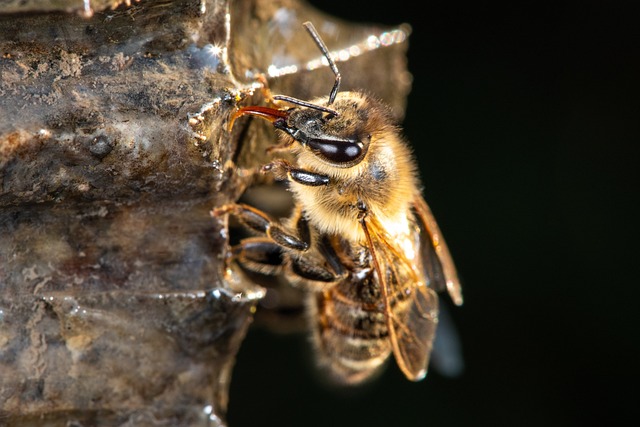Wood damage and infestations, common in residential and commercial spaces, require proactive measures. Commercial settings need effective commercial wood insect removal strategies for structural integrity and environmental health, focusing on pest identification, understanding behavior, and customized treatments. Regular inspections, natural barriers, and tailored solutions from professionals are key. In residential areas, eco-friendly methods targeting pests and rot preserve wood beauty and property lifespan without harsh chemicals, contributing to a sustainable environment. Advanced, innovative treatment methods, including chemical and natural approaches, revolutionize commercial wood insect removal, offering businesses sustainable options while meeting environmental regulations.
“Discover effective tailored solutions for residential and commercial wood preservation, addressing common issues like pest infestations that can cause significant damage. This comprehensive guide explores understanding wood damage and infestations, with a focus on commercial wood insect removal strategies for large-scale operations. Learn about natural and advanced treatment methods, including chemical and organic approaches, to ensure long-lasting protection for both home and business environments.”
Understanding Wood Damage and Infestations: Common Pests and Their Impact
Wood damage and infestations are common issues that can affect both residential and commercial properties. Understanding these problems is crucial for effective prevention and treatment. In homes, pests like termites, carpenter ants, and powder post beetles are frequent intruders, causing structural damage over time. These insects bore into wood, creating intricate tunnels that weaken the material, leading to cracks, warping, and even structural failure if left unchecked.
In commercial settings, wood insect removal becomes even more critical due to larger structures and potential health hazards. Termites, in particular, can cause significant damage to wooden beams, floorboards, and frames, resulting in costly repairs or even building instability. Effective commercial wood insect removal strategies involve identifying the specific pest, understanding their behavior, and employing tailored treatments to eliminate them and prevent future infestations.
Commercial Wood Insect Removal: Effective Strategies for Large-Scale Operations
In large-scale commercial operations, effective commercial wood insect removal is paramount to preserving structural integrity and maintaining a healthy environment. Infestations from termites, beetles, and other pests can cause significant damage to wooden structures, necessitating prompt and strategic intervention. Professional pest control services employ a range of tailored solutions, including the application of environmentally friendly insecticides, heat treatments, and specialized equipment for deep penetration and thorough cleansing.
Regular inspections are key to early detection, allowing for more targeted and less invasive treatment methods. For instance, baits and traps can be strategically placed to monitor and control pest populations before they cause widespread damage. Additionally, using natural barriers like sealants and repellents can fortify wooden surfaces against future infestations, making them less appealing to insects and providing a longer-lasting solution for commercial wood insect removal.
Tailored Solutions for Residential Wood Preservation: Protecting Your Home Naturally
When it comes to preserving your home’s natural beauty and structural integrity, tailored solutions for residential wood preservation are essential. These solutions focus on using eco-friendly methods to protect against pests, rot, and other damage. By understanding the unique needs of different types of wood and exposure levels, professionals can offer targeted treatments that enhance the lifespan of your property without resorting to harsh chemicals.
One of the key benefits of tailored residential wood preservation is its ability to address specific issues while minimizing environmental impact. For example, natural repellents like essential oils and plant-based pesticides can be effective in deterring insects like termites and carpenter ants. Additionally, regular maintenance checks and timely repairs can prevent small problems from escalating into costly repairs. This proactive approach not only safeguards your home but also contributes to a healthier and more sustainable living environment.
Advanced Treatment Methods: Chemical and Natural Approaches for Long-Lasting Protection
In today’s world, advanced treatment methods are revolutionizing the way we preserve wood in both residential and commercial settings. When it comes to protecting wooden structures from pests like termites and insects, there are two primary approaches: chemical and natural. Chemical treatments involve the application of pesticides designed to eliminate or repel insects, offering a swift solution for immediate issues. However, with growing environmental concerns, many are turning towards natural alternatives.
Natural methods leverage plant-based oils, essential minerals, and beneficial microorganisms to create eco-friendly solutions. These approaches not only provide long-lasting protection against wood insects but also contribute to a healthier environment. In the commercial wood insect removal sector, these innovative techniques are gaining traction as businesses seek sustainable options that meet strict environmental regulations while ensuring the longevity of their wooden assets.
In addressing the challenge of wood preservation, whether in residential or commercial settings, understanding the specific needs and unique aspects of each environment is key. From identifying common pests and their impact to employing effective strategies for commercial wood insect removal, tailored solutions ensure optimal protection. By combining advanced treatment methods that integrate both chemical and natural approaches, we can achieve long-lasting protection while preserving the integrity and beauty of wood structures.
